Cleanwatts Digital manages the complete R&D lifecycle from planning to market deployment.
Our dedicated Innovation team delivers 100% commitment to developing advanced products, solutions, and architectures that support cutting-edge research programs.
Join our Cleanwatts Digital Living Lab, a cutting edge regulatory sand-box, or get hands-on experience at Cleanwatts Digital Academy.

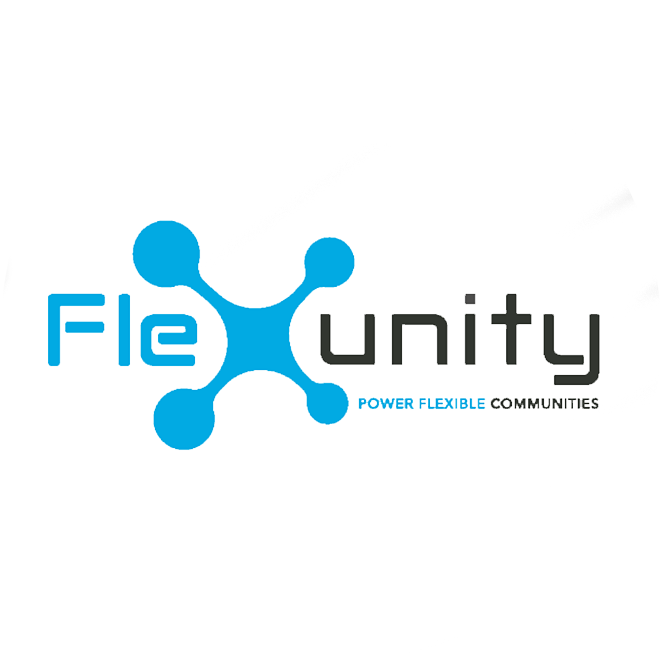
FlexUnity aims to provide advanced tools and services to address the challenges of the energy transition. Its outcomes will support RES penetration, while ensuring grid stability and lower balancing costs, improving energy efficiency for end-users and increasing investments in self-generation, storage and load management. This will create more opportunities for consumers to capture value from their energy assets.
FlexUnity’s main goal is to develop and validate the VPP digital tools based on advanced Artificial Intelligence, remote automatization and blockchain. These digital tools will be used to to optimize community energy flexibility, match consumer’s energy needs, ensure further development of RES, optimize distributed energy resources, and contribute to the current energy security and climate change challenges, while enhancing retailers and aggregators competitive advantage.
This project has received funding from the European Union’s Horizon 2020 research and innovation programme under grant agreement No 870146.


Integrated Smart GRID Cross-Functional Solutions for Optimised Synergetic Energy Distribution, Utilisation & Storage Technologies
inteGRIDy (H2020) aimed to integrate cutting-edge technologies, solutions and mechanisms in a scalable Cross-Functional Platform. This platform connected energy networks with various stakeholders, facilitating optimal and dynamic operations of the Distribution Grid (DG), fostering the stability and coordination of distributed energy resources, and enabling collaborative storage schemes within an increasing share of renewables.
inteGRIDy aimed to:
The inteGRIDy approach was deployed and validated in 6 large-scale and 4 small-scale real-life demonstration covering different climatic zones and markets with different maturity. The project started in November 2016 and ended in January 2021.
This project has received funding from the European Union’s Horizon 2020 research and innovation programme under grant agreement No. 731268.


Smart Distribution Grid: a Market Driven Approach for the Next Generation of Advanced Operation Models and Services.
This European research project was supported by Horizon 2020, in which we worked with Empower (coordinator – Finland), EDP (CNET and EDP Distribution), ISEP (GECAD), Lappeenranta University of Technology – LUT (Finland), Queens University of Belfast (UK) and University of Seville (Spain).
The DOMINOES project aimed to enable the discovery and development of new demand response, aggregation, grid management and peer-to-peer trading services by designing, developing and validating a transparent and scalable local energy market solution. The project aimed to show how DSOs can dynamically and actively manage grid balance in the emerging future where microgrids, ultra-distributed generation and energy independent communities will be prevalent.
The project aimed to establish solutions to this challenge by addressing the following steps:
The project delivered:
These results were validated in three validation sites in Portugal and Finland: a DSO environment in Évora (Portugal), a VPP site distributed across bank branches in Portugal and a microgrid site in Lappeenranta (Finland).
Cleanwatts was the technology partner, contributing with its expertise in the development of:
The project lasted for three and a half years from October 2017 until June 2021.
This project has received funding from the European Union’s Horizon 2020 research and innovation programme under grant agreement No. 771066.

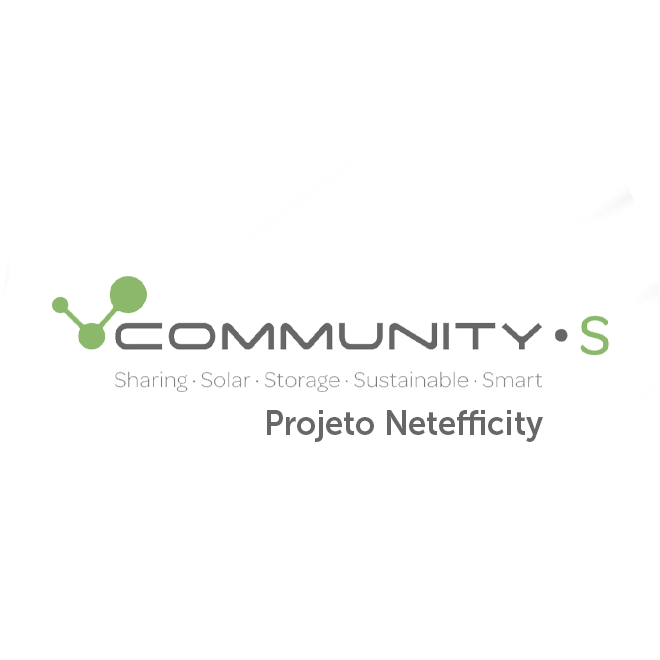

Project #18015
Support in the scope of the Incentives for Research and Technological Development (SI R&D) system – Copromotion Proj.
NetEffiCity – Virtual Power Networks Efficient Management (PT2020)
Total Eligible Cost: 274.254,37 €
EU funded support: 151.803,63 €
Project overview:
This project intends to validate and demonstrate, on a large scale, previously developed technologies in R&D activities, that increase energy efficiency in buildings by reducing energy consumption during the most expensive periods and optimizing available energetic resources management. It also aims to increase consumers’ energy independence by using global management tools for decentralized production.
Energy and environmental monitoring solutions as well as remote control solutions for electrical devices will be applied. These devices will be managed by a centralized software platform, responsible for the acquisition, validation and storage of the collected data, for further processing and decision support techniques application based on neural networks and learning capacity. This platform will inform users about their consumption profiles, through graphical interfaces specially designed for the different users’ categories, to allow a more rational use of energy.
The demonstrator will also allow the creation and testing of new and more efficient business models, exploring to the maximum the demonstrated solutions’ potential and leverage the internationalization strategies of the business promoters.
Cleanwatts, as the main promotor of this project that started in September 2016, has developed the Community S concept to better connect the people who will benefit from the project and its objectives.
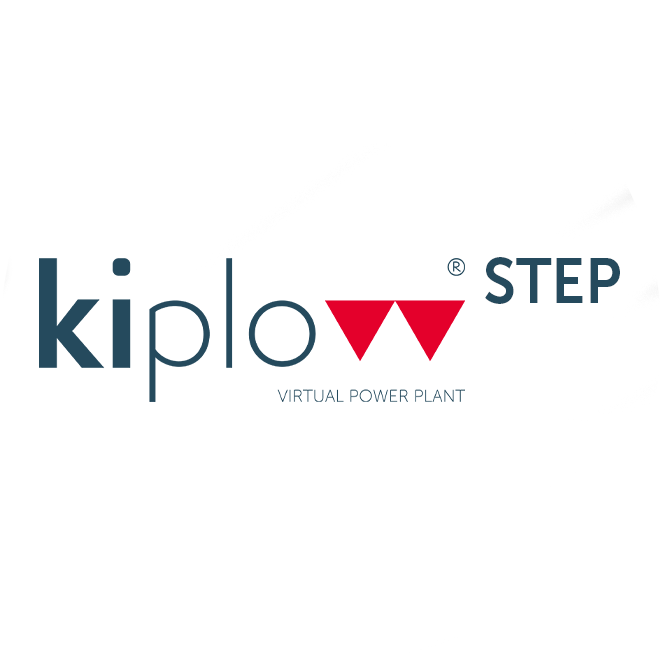

Smart Transactive Energy Platform
The platform introduces automated mechanisms that simplify the end-users’ interactions with:
Local energy markets between different members in the energy community providing more transparency and accessibility to them;
Upstream markets (or multi-layered energy market), allowing them to have a very active role responding to market requests, complying with physical, legal and regulatory barriers and framework, exploring new business opportunities related with the energy flexibility of small loads, promoting the reduction of energy bills, maximizing renewables integration, providing ancillary services while assuring a quality and security of supply.
Kiplo® STEP, will be an end-to-end platform that connects consumers, prosumers and aggregators enabling new business models and fostering local energy markets and energy communities.
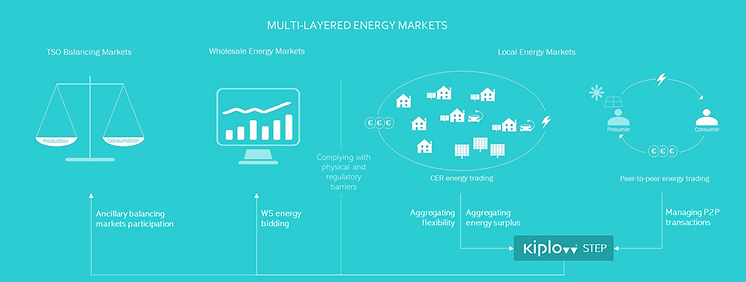
The Kiplo STEP project acknowledges the cooperation of Tiago Fonseca from ISEP, whose Master’s thesis on optimization algorithms topic was developed under and contributed to the Kiplo STEP project.
If you wish to view the Kiplo STEP closing webinar, access the presentations, or visit the demo site, please contact mail@cleanwattsdigital.com.
It is a project supported by the Horizon Europe under the EIC Accelerator Seal of Excellence scope, by the call Aviso N.º 18/SI/2020 (SI-47-2020-18)
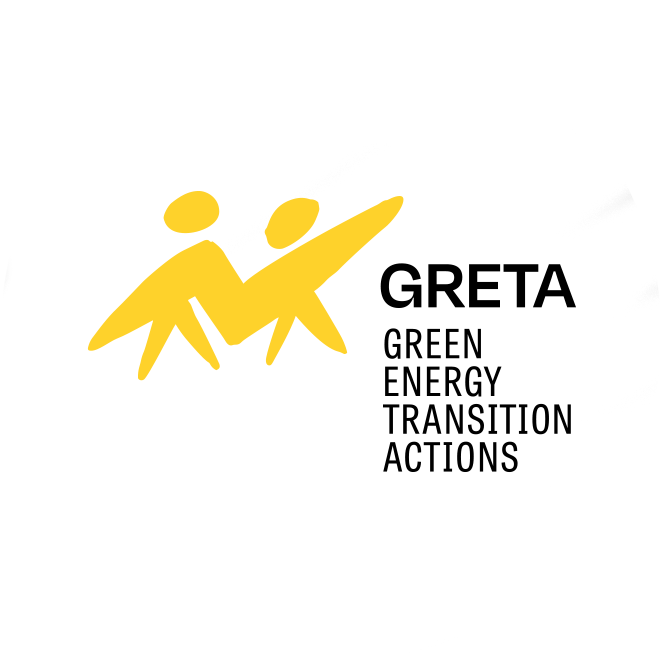
Project overview
We are GRETA, a project that paves the path to active energy citizenship and communities. Energy citizenship means that every one of us can use energy in a sustainable way and participate in the energy transition.
The challenge
The EU aims to reach climate neutrality by 2050. This goal can only be achieved if citizens are given equal opportunity to take action towards it.
Energy citizenship
Energy citizenship means that every one of us can use energy in a sustainable way to move towards active participation in the energy transition.
The project
GRETA studies the social side of the energy transition. We want to understand how energy citizenship works in different contexts and geographical levels. What kind of knowledge, social structures, technology or financial resources are needed to make an active energy citizen?
Case studies
From 2021 to 2023, we will be working with energy communities in Germany, Italy, the Netherlands, Portugal, and Spain. Citizens in these communities will adopt renewable energy, use electric vehicles, monitor their energy consumption and participate in the sustainable planning of mobility both within their cities and internationally.
GRETA will also launch a first-of-its-kind EU-wide empirical citizen consultation. Our survey will be sent to energy customers, suppliers, intermediaries, retailers and policymakers in 25 countries, driving unique insights about the emergence of energy citizenship.
Objectives
GRETA studies solutions and provides recommendations on how to achieve civic energy empowerment through energy citizenship. The project has five objectives:
This project has received funding from the European Union’s Horizon 2020 research and innovation programme under grant agreement No. 101022317.



Project number 45405 Sflex
Support in the scope of the Incentives for Research and Technological Development (SI R&D) system – Individual Proj.
Sflex – Small Loads flexibility management
Total Eligible Cost: 478.624,37 €
EU funded support: 300.934,83 €
Project overview
Because of the transformation of the electric sector the costs of management and balance of the grids are increasing, which are reflected later in the customer tariffs. Solutions based on the technological advances in the ICT field are allowing the implementation of Intelligent Energy Networks and new demand management mechanisms, with an increasing potential to guarantee grid balance, but are still significant economic barriers for wider deployment (for inclusion of small energy loads).
The sFlex project – Flexibility management of small loads aims at developing an intelligent flexibility management platform that allows a use of flexibility from small loads focused on benefits to both Smart Buildings and Smart Grids, allowing a reduction of imbalances in grid balancing, reducing energy costs in buildings, maximizing the use of renewable energy, and enhancing new revenues with the use of flexibility. It will act in three distinct areas that reflect the innovation approach of this project:
Location: Coimbra
This project has received funding from the European Union’s Horizon 2020 research and innovation programme under grant agreement No 957810.

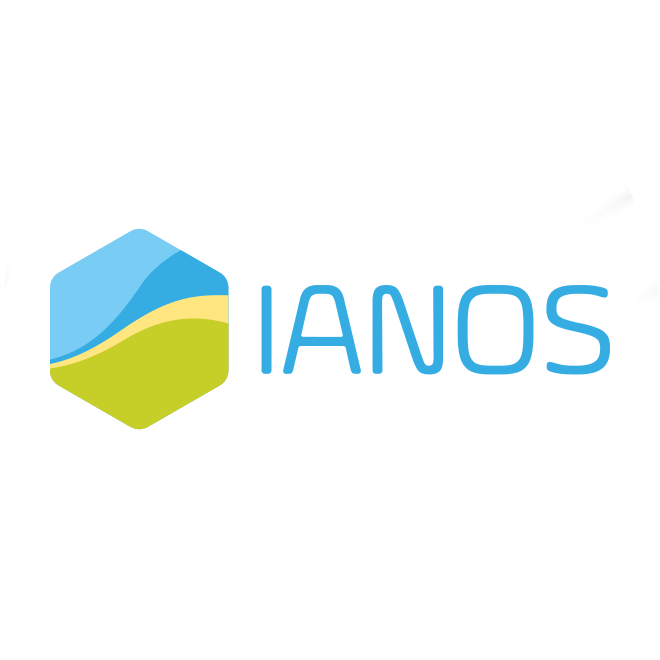
A STRONG DECARBONISATION STRATEGY
There are more than 2,700 islands all over Europe and every island has its own conditions. That is why the IANOS project aims at tailor-made solutions.
IANOS selected the islands of Ameland (Netherlands) and Terceira (Portugal) to serve as “pilot islands” because they both represent common EU challenges in terms of energy requirements, population, climatic conditions and topographic characteristics. The islands also offer various large-scale storage solutions for renewable energy sources and differ in their market characteristics, policies and regulations around the storage of energy. Considering their different penetration levels of renewable energy and grid conditions, they also represent different technical challenges.
The IANOS project also includes three “Fellow Islands” to validate the replicability potential of the results of the pilot islands. The islands selected are Lampedusa (Italy), Bora Bora (French Polynesia) and Nisyros (Greece).
VIRTUAL POWER PLANT BASED ON ARTIFICIAL INTELLIGENCE
A Virtual Power Plant (VPP) is a cloud-based cluster of intermittent energy generators such as wind turbines, solar panels, power-to-x facilities, vehicle-to-grid facilities, etc. that can be controlled from a central point. IANOS will demonstrate a VPP that uses Artificial Intelligence (AI) to optimise the generation of energy and balance demand and supply of energy on the islands. The AI is based on meta-learning predictive methods, fog computing, and a smart grid/advanced metering infrastructure integration to maintain stable system operation by taking into account several uncertainties and technical constraints such as ramp-up and down times, and compensating imbalances within various timeframes.
The core functionalities of the VPP include:
INNOVATIVE TOOLS SUPPORTING GREENER INVESTMENTS
The IANOS Energy Planning and Transition Suite will assist key island stakeholders, such as energy system planners, utility owners and public authorities, in developing an effective renewable energy portfolio and island decarbonisation plan.
The main elements are:
• A crowd equity platform to promote collaborative investments and co-ownership of renewable energy assets for citizens and island stakeholders;
• A dedicated Life Cycle Assessment (LCA) toolkit to further assist in the decision making process: large prosumers groups will be grouped together and be able to optimise their environmental impact through LCA analysis, and increase potential economic benefits by minimising energy costs;
• A grid-oriented optimiser, providing detailed modelling and grid scenarios simulations to examine the transient performance and network constraints per scenario given.
PEOPLE AS ACTIVE PLAYERS IN THE ENERGY SYSTEMS
The community and islander-centric approach of IANOS is based on two main axes:
Active participation of citizens through the deployed ICT solutions (promoting crowdfunding for renewable energy investments, exchange of energy credits on established bilateral prosumer contracts, participation in implicit and explicit demand-response schemes, exchange of information on sustainable energy themes);
Social engagement program led by the local Island authorities, to take into account critical feedback from islanders on the new investments.
Website: https://ianos.eu/
This project has received funding from the European Union’s Horizon 2020 research and innovation programme under grant agreement No. 957810.


me² represents a new market place for urban actors in which a local community of electric vehicle (EV) users and local smart meter (SM) owners are brought together through means of a local urban online community. The combination of these technologies in a community allows to integrate mobility with electricity, to balance the grid, to reduce electricity costs, and to enable a feeling of local belonging. me² enables urban demand-side management, i.e. aims to modify consumer demand for energy such as using less energy during peak hours in an urban community.
Expected Results:


Project #40004
Support in the scope of the Incentives for Research and Technological Development (SI R&D) system – Co-promotion Project.
AESOP – Autonomic Service Operation
Total Eligible Cost: 109.698,37 €
EU funded support: 79.115,75 €
Project overview
For business services to function correctly today, software solutions deployed to any cloud provider need to maintain proper availability and performance levels. Although there are currently several different approaches and tools that monitor technical parameters, these are not enough for monitoring business levels. Therefore, there is a gap between what can be monitored and observed and what the business needs.
To overcome this gap, this project aims to develop a new platform that allows to specify a set of business parameters, while those parameters are part of a feedback adaptive loop that can actuate on those applications and its infrastructure beneath.
This feedback loop will take advantage on virtualized infrastructure, built on infrastructure-as-code principles that are to extended to address the business level needs. For this purpose, we need to make an explicit definition on what those business levels are, both during development cycle and operation cycle.
To achieve this overall goal, we built a 3 company consortium, where University of Coimbra will bring the ability to research and explore new algorithms for adaptive detection and predictive actuation; Cleanwatts will bring the overall real world information from the industry and Fiercely will work for integrating the different views and technologies in order to guarantee the holistic view on business performance.
Location: Coimbra
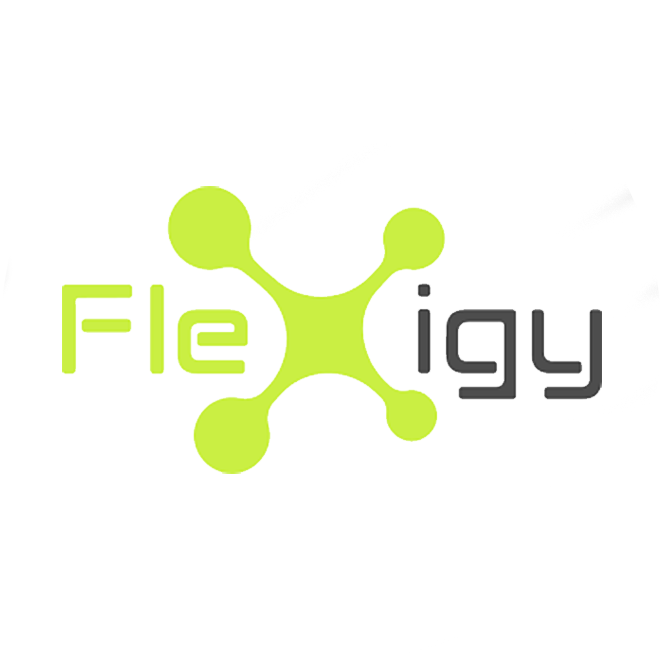

Project #034067
Support in the scope of the Incentives for Research and Technological Development (SI R&D) system – Co-promotion Project.
Flexigy – Energy Flexibility Services Platform
Total Eligible Cost: 1.055.557,57 €
EU funded support: 668.538,32 €
Project overview
R&D focuses on three main challenges:
1. How to overcome regulation barriers to deploy balancing and flexibility services
The consortium will create an Energy Virtual Community concept that will operate behind the meter overcoming the legal barriers. The services will be developed in a way that the aggregator will engage energy assets with private bilateral contracts that will allow the use of distributed energy resources in a collaborative approach so that the benefit from the contribution of all community will be significant higher than the individual optimization of energy assets.
2. How to gain end-user trust to participate
We will implement Blockchain technology in the community platform to increase trust and help with the virtual energy transactions management.
3. How to operationalise community optimization mechanisms
We will develop the Cyber-physical components that will ensure the reliability of the system complying with the needed low cost requirement to be economically viable.
Key outputs:
Location: Coimbra


Project number POCI-01-0247-FEDER-040123
Lisbon-01-0247-FEDER-040123
Project Name: Smart-PDM – A Smart Predictive Maintenance Approach Based on Cyber Physical Systems
Support in the scope of the Incentives for Research and Technological Development (SI R&D) system
Main Goal: To bolster investigation, technological development and innovation.
Intervention Regions: North, Center, Lisbon
Beneficiary Entity: Cleanwatts Digital, S.A. (leader)
Instituto Superior de Engenharia do Porto
Sonae Center Serviços II, S.A.
Approval Date: 17-12-2019
Begin Date: 01-01-2020
Conclusion Date: 30-06-2022
Total Eligible Cost: 702.258,81 €
EU funded support: 449.477,49 €
Project overview
SMART-PDM’s objective is to acquire manufacturing data to provide diagnosis and prognosis information while rendering the underlying technology financially feasible.
In order to achieve this goal, we created a very complementary and conducive consortium with 13 use case demonstrators with a consortium formed by 6 integration & tools providers and 14 technology and knowledge providers all waiting to test out and further improve their technologies, with a balanced breakdown of 12 SMEs, 9 large organizations, 7 RTOs, and spread across 6 countries.
The Portuguese part of this project is structured upon a use case related with after sales support in retail operations of domestic appliances with special emphasis on the creation of new services for the predictive maintenance of domestic equipment as a differentiator factor for the business.
Predictive maintenance challenges are reflected in the project SMART-PDM, where the companies intend to improve the OEE (availability, performance, and quality) to provide better products and services, reducing costs, increasing profitability and associated security. Diagnostic and prognostic actions allow machines or processes to be maintained in good conditions, provide more precise knowledge concerning the occurrence of failures and provide instructions on how to keep the equipment in optimum condition, or How to fix them. On the other hand, the servitization of maintenance and other marketing strategies will be considered in order to provide a greater added value to customers, retailers and producers of equipment, taking advantage of the potential savings offered by prognostic techniques, a relatively new area, which became an important part of maintenance systems.
Cleanwatts as a fundamental part of the project
Cleanwatts’ role covers all phases of the SMART-PDM project. Cleanwatts’ commitment includes:
To know more about SMART-PDM please visit the project’s website at https://smart-pdm.eu/.
Location: Coimbra

Project overview
Only 2 out of the top 20 companies changing lives and making money out of Big Data are European. Europe is not playing the role it should in the global market.
European Data Incubator (EDI) project aims to revert this situation. Every company is born as a startup, and Big Data has already proven to be a disruptive technology that can provide substantial changes in traditional and innovative domains.
Many SMEs are facing a number of problems when attempting to develop a sort of comprehensive data strategy. The tools required to make successful data management an achievable prospect often require an up-front capital investment. The data remains in silos and its availability or cross-domain value is still unperceived. EDI will help them jump this hurdle providing:
The main objective of the project will be to leverage the technology and knowledge on Big Data across countries and sectors thanks to the incubation of start-ups/SMEs who use Big Data open source tools oriented to sort out major challenges in different business which facilitate their data assets. An experienced consortium will be behind EDI. It is comprised by experts on Big Data technologies, the managers of several acceleration initiatives within the FIWARE Accelerate programme, existing incubators like Deusto Entrepreneurship Centre and etventure Seed Lab and the largest online network for start-ups (F6S).
Moreover, 16 data providers, from Finance, Transport, Industry 4.0, Retail, Media&Content, Energy, etc. will provide data to the incubation process. We expect to incubate around 120 companies under a 3-phase incubation programme (funnel approach) launching 3 call for proposals and disbursing up to €5M equity-free and commiting to raise additional financing resources up to €15M for them from private investors mainly.
This project has received funding from the European Union’s Horizon 2020 research and innovation programme under grant agreement No. 779790.

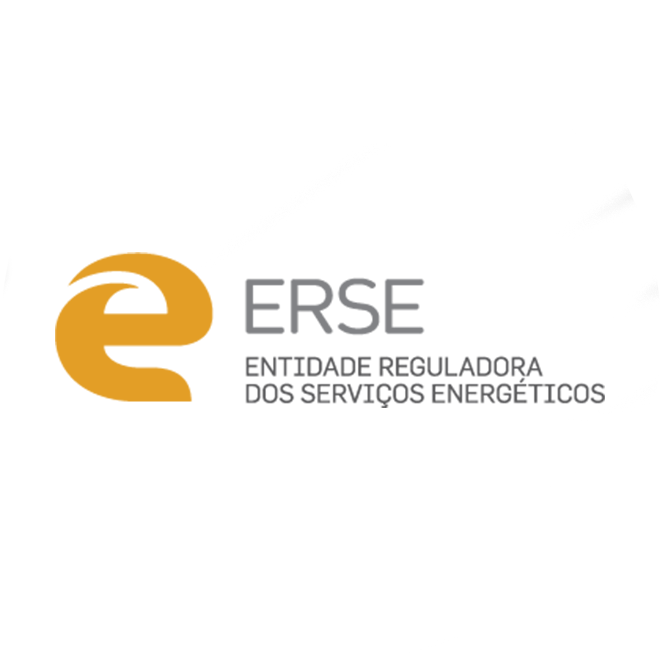
Web portal for efficient and smart homes
Measure funded under the Energy Consumption Efficiency Promotion Plan, approved by ERSE – Energy Services Regulatory Authority.
Amount funded: 220,385 €
Developer: Cleanwatts II, Energia Limpa, Lda – Ladeira da Paula, No. 6, 3040-574 Antanhol, Coimbra, Portugal, NIF 515560499
Brief Description
The intangible measure called “Web Portal for Efficient and Smart Homes” has the main objective of promoting improved energy efficiency in the residential sector nationwide, by encouraging more efficient practices and behaviors, implementing consumption reduction plans, and promoting tools and procedures that enhance energy optimization and renewable self-consumption in this sector.
Specifically, this project raises awareness by providing up to 150 participating households with a free digital platform for viewing real-time energy information and continuous analysis of these optimized consumption levels, which both increase renewable energy self-consumption and reduce grid consumption, consequently reducing energy bills. This project also focuses on raising awareness and disseminating best practices in energy efficiency for the residential sector, promoting the adoption of energy-efficient behaviors by participants and, thus, combating energy poverty and social vulnerability.
Objectives
With this proposed measure, we aim to overcome significant market barriers through innovative communication and awareness-raising methods, as well as by implementing systems for measuring and optimizing the use of (renewable) electricity.
This project will thus address the lack of information regarding energy efficiency and generic measures to be implemented in the residential sector, particularly regarding behavioral patterns, habits, and attitudes that can be easily adopted—at no cost and without compromising the quality and comfort of the energy services provided.
Another barrier to overcome is the cost of residential energy monitoring and management equipment. To obtain relevant, consistent, and detailed information on building consumption, monitoring equipment must be installed, often involving a large initial investment that most residential consumers cannot afford independently (especially those experiencing energy poverty and social vulnerability). Therefore, the market penetration of residential energy management systems is very low. The creation of a Best Practices Manual, resulting from the systematization of experiences with real-life installations in homes throughout the project, cross-referenced with benchmarked energy consumption statistics, will also enhance the installation of this equipment and the implementation of energy-efficient behaviors.
The proposed measure will also overcome the lack of real-time information available for participating consumers to verify the results of their actions within the system. Indeed, to effectively manage the energy consumption of an efficient and smart home, it is necessary to understand a wide range of equipment (such as flexible electrical equipment, stationary batteries, photovoltaic panels, etc.), their interactions, and how they behave, taking into account the variability of the installation conditions (e.g., occupancy, temperatures, type of services available, etc.).
Another major barrier to implementing these measures is the widespread belief that their implementation could have negative effects on the comfort of participating consumers, particularly a decrease in the quality of services. However, in this project, we aim to train participating consumers and demonstrate that energy efficiency and the practice of efficient behaviors are not a detrimental factor in energy use; quite the opposite, as they improve the quality and efficiency of the services provided.
This measure will thus fill the significant gap in training and information regarding energy efficiency in homes, as well as leverage various approaches to reduce overall consumption (by increasing the proportion of renewable self-consumption), energy costs, and, consequently, improve margins.
On the other hand, this measure is very focused on informing citizens about the adoption of efficient behaviors in the residential sector at a national level, using dissemination materials, training workshops, and national presentations throughout the two-year project. Furthermore, the website will be a fundamental tool for advising participating consumers (especially those in situations of poverty).


C644919832-00000035 | Project No. 46
Measure: Recovery and Resilience Program (RRP) – C5 | Corporate Capitalization and Innovation | RE-C05-i01.01 | Mobilizing Agendas/Alliances for Reindustrialization Eligible Investment
Consortium Leader: Bosch Termotecnologia S.A.
Co-Promoter: Cleanwatts Digital, S.A.
Project Start: October 1, 2021
Expected Completion: June 30, 2026
Total Agenda Investment: 116,263,810.32 €
Total Cleanwatts Digital Investment: 255,335 €
Agenda Description
The ILLIANCE Agenda aims to contribute to carbon neutrality in the buildings sector through the development of innovative technological solutions focused on the pillars of health, comfort, and sustainability.
WP3, coordinated by Bosch Security Systems, encompasses PPS5 – iNERGY, which focuses on promoting innovative solutions and dynamics to improve energy efficiency in buildings, including the development of a smart window, the integration of a bidirectional charger with Vehicle-to-Grid (V2G) technology for electric vehicles, and the creation of a digital energy management platform that allows energy consumption profiles to be adjusted based on user habits.
Cleanwatts Digital Objectives
Cleanwatts Digital, S.A. (CWD) participates as a co-sponsor in PPS5 and is responsible for the acquisition, integration, and interoperability of the V2G charger, ensuring communication between this physical device and Bandora’s digital energy management platform.
Specifically, CWD’s role is to act as a technological bridge between the V2G charger and Bandora’s control system, ensuring integration via the OCPP (Open Charge Point Protocol) protocol and providing a REST API that allows Bandora to monitor and control the charger, defining charging and discharging plans.
Activities Developed
Expected and Achieved Results
Impact and Innovation
Cleanwatts Digital’s contribution reinforces Portugal’s role in advancing interoperable energy technologies and the smart management of sustainable buildings.
The developed solution allows us to explore the potential of electric vehicles as storage and grid stabilization units, constituting an essential step towards the energy transition and decarbonization.
For more information about the project: https://www.illiance.pt/ | https://www.linkedin.com/company/agendailliance/
For more information about the Recovery and Resilience Plan: https://recuperarportugal.gov.pt/
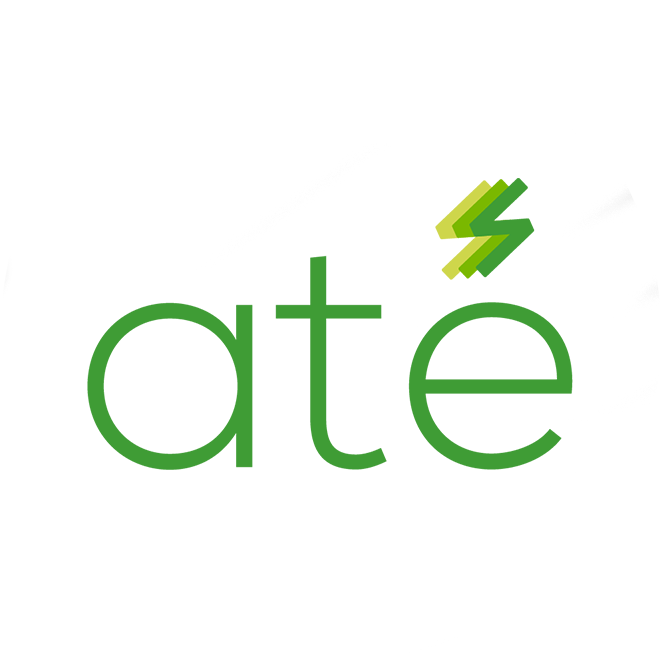

Beneficiary eligible incentive: 689,847.58 €
Duration: June 2022 – June 2026
Funding program: Recovery and Resilience Plan (PRR) – RE-C05-i01.01 – Mobilizing Agendas/Alliances for Business Innovation
Project Scope: The ATE Agenda (Alliance for Energy Transition) is one of Portugal’s flagship projects funded by the Recovery and Resilience Plan (PRR), aimed at promoting the transition to cleaner energy and driving innovation in the Portuguese energy sector. Led by EFACEC, this consortium with 80 promoters develops the economy through high value-added activities that create qualified employment, especially in international markets.
The PRR framework is Portugal’s national application of the European NextGenerationEU instrument, focused on reforms and investments to promote sustained economic growth with special attention to digital and ecological transition.
Within the PRR, Mobilizing Agendas are projects that aim to diversify and specialize the economy, promoting business innovation, reindustrialization, and energy transition to transform Portugal’s economic specialization profile toward more competitive activities oriented to international markets.
Cleanwatts operates specifically within PPS11-WP3-TA2 – Energy communities and microgrid networks, where our consortium with GALP and INESC-TEC develops comprehensive solutions for distributed energy resource aggregation and management in local energy communities.
Cleanwatts Digital’s Role & Impact
Within the ATE – Alliance for the Energy Transition, Cleanwatts Digital (CWD) assumed a central role in TA02-WP3, dedicated to enabling the operation of residential and small business Renewable Energy Communities (RECs) through advanced solutions for the aggregation and smart management of decentralized energy resources (DERs).
Our Contribution
Cleanwatts’ responsibilities spanned the full development cycle, from conceptual design to real-world deployment:
Impact Achieved
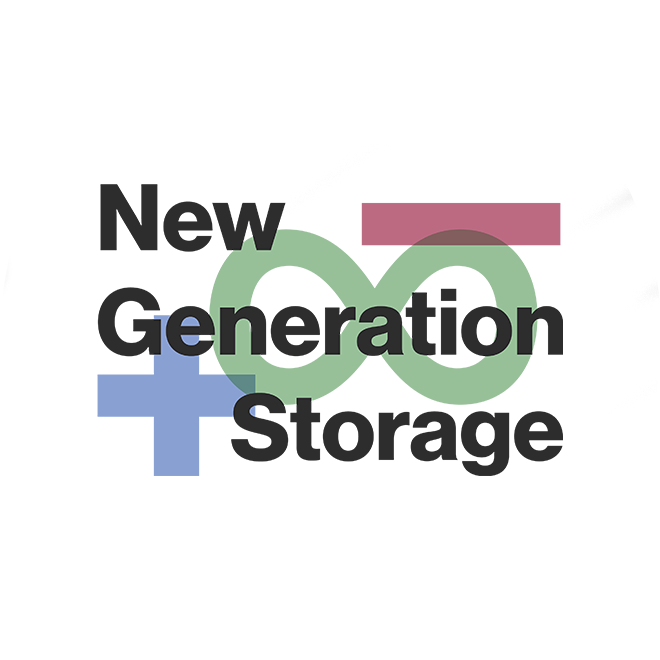

Consortium leader | DST SOLAR, S.A
The New Generation Storage (NGS) Innovation Pact is fully aligned with the European Union’s energy transition strategy up to 2040, and the challenge for the complete electrification of mobility by 2035. Based on a model structured around 8 Work Packages that cover the entire value chain for the production of components, packs and battery recycling, it is proposed to add value to each stage of the process, culminating in a common goal: the creation of a new technological ecosystem in the area of batteries that will set the national industry apart in the global market. Through the cooperation of 47 entities, the aim is to structurally transform the country’s productive fabric, creating the necessary conditions – in terms of technology and human resources – for an industrial ecosystem capable of mass-producing innovative technologies, and a complete value chain that enables end-of-life management that is a global benchmark.
NGS is made up of complementary technological Work Packages (WP) with the capacity to autonomously generate Products, Processes or Services (PPS) for the international market, incorporating innovative technologies that can increase value over the course of the project. Individually, each WP can operate independently in a specific area of the value chain. However, together, they interconnect and build a significant circular chain.
Financing Program: Recovery and Resilience Plan (RRP)
Dimension: Resilience
Beneficiary Entity: Cleanwatts
Eligible investment: 4.118.166,84 €
Financial support: 2.059.083,42 €
Start date: 01.10.2022
End date: 31.12.2025
Beneficiary Involvement: Work Package 4 – BP12 OPTIMIZED DISTRIBUTED STORAGE FOR ENERGY COMMUNITIES: 2.059.083,42 €
Project overview
BP 12 – OPTIMIZED DISTRIBUTED STORAGE FOR ENERGY COMMUNITIES
Efforts led by Cleanwatts
Objectives:
Development and validation under real world conditions of the integration of decentralized batteries in Energy Communities using advanced algorithms such as small scale virtual power plans
Action Plan | R&D – Development of energy resource management tools for Energy Communities
A1: State-of-the-art assessment and requirements analysis [M1 to M11]
We will consolidate the knowledge acquired in the pre-project phase, and a research exercise will be carried out, with international scope, allowing for updating the state of the art.
A2: Design of new business models for Energy Communities [M1 to M36]
This activity will conduct the survey of the Energy Communities’ needs, the definition of Use Cases (electric mobility, storage and distributed generation), the optimal dimensioning of energy resources developing and defining new business models.
A3: Flexibility services provided by Energy Communities [M1 – M34]
Define, assess and demonstrate (in simulation), that some of the System Services needs can be met by using energy assets (e.g., batteries) aggregated and managed in the format of Energy Communities.
A4: Design, development and integration of the Platform [M1 – M34]
The essential requirements for the design and architecture of the different components that constitute the platform to be developed will be defined. This initial task will be of crucial importance for the development and integration tasks of hardware, software and graphic interface.
A5: Artificial Intelligence Algorithms [M1 – M33]
The algorithms/multi-criteria models for aggregation/disaggregation of energy resources will be developed, so that they can be used to trade the flexibility available and to be established energy markets. The developments include the AI algorithms to optimize the energy resources of an Energy Community, taking into account the established requirements, in order to, namely, match supply and demand, maximize self-consumption, as well as estimate the available flexibility to participate in the energy markets.
A6: Implementation, demonstration and validation in large-scale pilot [M12- M48]
The consortium will: 1) acquire and engage consumers and prosumers from different activity sectors to be part of a large scale Energy Community pilot; 2) Carry out the necessary surveys and audits for the equipment installation and commissioning phase; 3) Install and carry out the commissioning of all the equipment, IoT devices and software; 4) Establish technical guidelines for the implementation and operation of the final solution; 5) Evaluate the Platform performance in a real environment, during data collection and pilot operation, considering pre-defined KPIs to analyze the necessary adjustments to be made to the functional operation and provide results for the commercial exploitation strategy.
Action Plan | PROD. INNOVATION – Production and integration of the management tool developed
A1: Production and integration of the management tool developed [M24- M48]
The productive investment of this project contemplates the production / integration tasks of the digital management tool developed within the R&D activities and productive investments on semi-automatic / automatic production lines and data-oriented quality & predictivity management for the batteries manufacturing processes.
Action Plan | Q&I – Commercial exploitation of R&D results
A1: Replicability and internationalization of the solutions [M24- M36]
This activity will develop 1) an analysis and definition of replicability of the solution in other international markets, 2) elaborate the exploitation plan, and 3) obtain the necessary qualifications for the solution (e.g., registrations, certifications).
A2: Dissemination, communication and intellectual property [M36- M48]
The aim of this activity is to develop the tasks of dissemination, communication, and clarification of the project, targeting the main target and relevant stakeholders, both nationally and internationally. This activity will include the project branding, development of websites and social media contents, preparation of technical and scientific and contents for publications, organization of webinar and workshops and intellectual property protection of the key exploitable results.
More information available at: https://www.pact.pt/site/project/ngs-new-generation-storage/
For more information on the portuguese PPR, please go to: https://recuperarportugal.gov.pt/


DESCRIPTION: PRR – Investment C16-i02 – Companies 4.0 – Digital Transition of Companies – Measure 04 – Entrepreneurship – Project 01 “Vouchers for Startups – New Green and Digital Products”
OBJECTIVES: – The transformation of the energy sector presents significant challenges in ensuring supply security and adding greater flexibility on the demand side to enable the integration of renewable distributed generation.
Energy flexibility consists of enabling the dynamic transformation of consumption to meet energy needs where and when they are needed. However, it is necessary to develop the necessary technology to automatically optimize the correspondence between supply and demand, providing stability in the transmission and distribution systems and reducing energy costs.
In light of the new energy sharing paradigm, which recent legislation allows. In this project, Cleanwatts (CW) intends to test AI models and algorithms in a real-world environment within its Living Lab. These models will enable smarter interconnection and optimization of energy sharing in Community Energy Communities (CERs) to maximize member savings.
TOTAL INVESTMENT: 45,060,000.00 €
BENEFICIARY ENTITY: Cleanwatts Digital, S.A.
BENEFICIARY INVESTMENT: 30,000.00 €